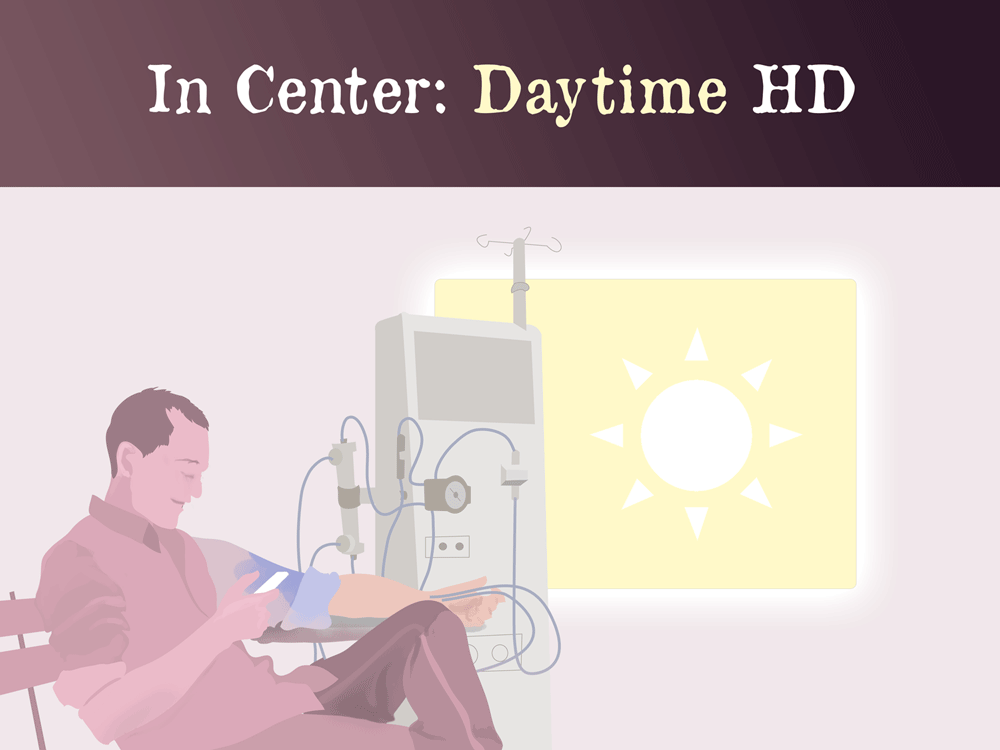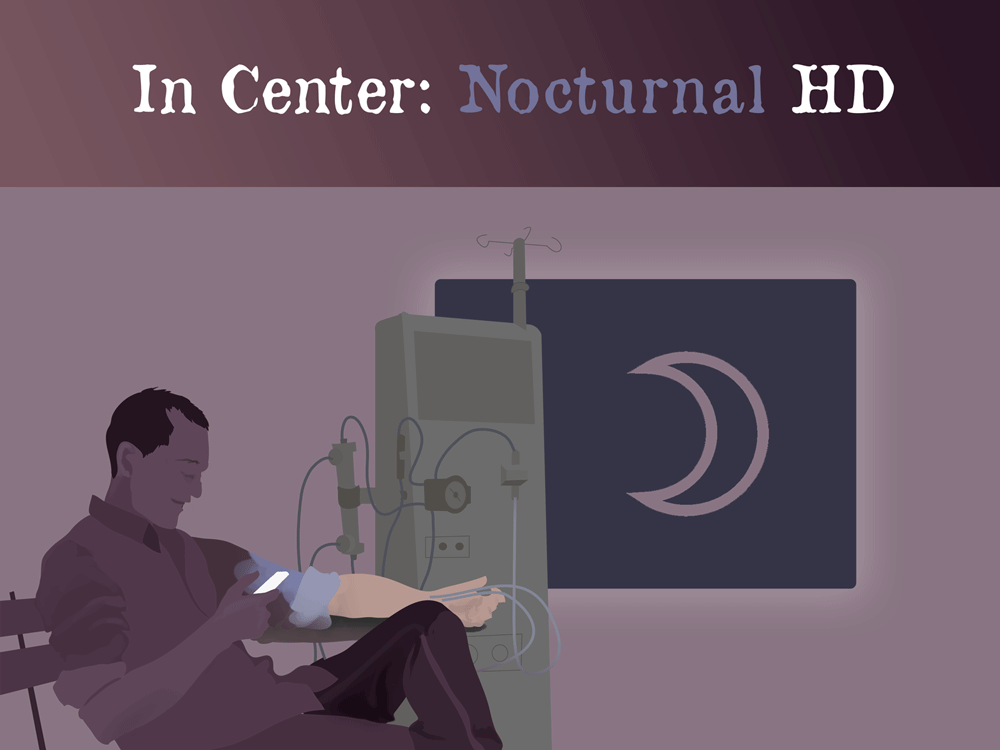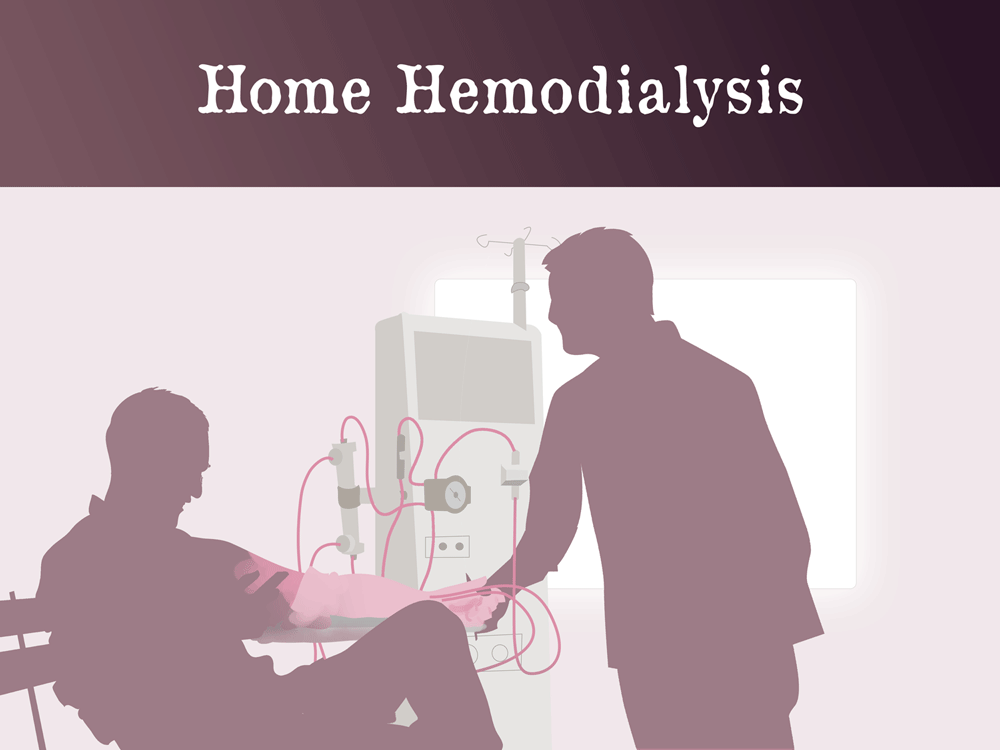Your lifestyle will largely determine which type of dialysis and where you chose to do it. Hemodialysis can either be performed at a dialysis center where a nurse or technician does dialysis for you, or it can be done by a machine within the home.
In a center during the day
Done by: Nurses and technicians
Ideal candidates: Retirees, people available during business hours
Pros: 3-4 hours in a chair to do whatever you want! Read, nap, use your laptop, listen to music, work…
Details: Bloodwork will be checked monthly to track your progress. Your doctor will visit you in the dialysis unit. Technicians and nurses will closely monitor you during your dialysis treatments. A nurse, social worker, and dietician will be dedicated to you.
Nocturnal Hemodialysis: At Home or In Center
With nocturnal hemodialysis the blood flow is much slower hence it takes almost 6- 8 hours for dialysis , as opposed to the more common 3-4 hours (with a higher blood flow). This can be done at home or in a center.
Done by: Nurses and technicians or a partner
Ideal candidates: People who are busy during the day
Pros: Better toxin removal, more fluid removal (diet is more liberalized), improved sleep patterns, improved appetite, less cramping and feeling ‘washed out’. Patients report having more control over their life as they are free in the day to attend work/school.
Cons: Sleeping attached to a dialysis machine 3 nights/week
Home Hemodialysis
There are two types of home hemodialysis (HHD):
- Short daily: 5-6 times a week, 2-3 hours per session
- Traditional: 3 times a week, 3-4 hours per session
It is very similar to in center dialysis. With home hemodialysis, the treatment schedule is tailored to the patient’s schedule and lifestyle.
Done by: You and a treatment partner
Details: This option may require modification to your home to accommodate the machine. You will need a ‘treatment partner’ to help you through the process; the actual schedule will be determined by your doctor, and nurses will keep in contact with you to monitor progress.
Self cannulation: This refers to patients inserting 2 needles into the access site. This may seem uncomfortable at first but often times a ‘button hole’ technique is used where the same 2 spots are cannulated. This make cannulation much easier and comfortable.
Training: Once a patient decides to do home hemodialysis they will go through a comprehensive training process. Patients and their partners learn how to operate the machine and equipment, self cannulate, and record treatments. Training takes about 1-2 months and is done by a specially trained nurse who will walk patients through the process.
2. Nocturnal Home Hemodialysis: Longer treatments at night while you sleep. With nocturnal hemodialysis the blood flow is much slower hence it takes almost 6 – 8 hours for dialysis, as opposed to the more common 3-4 hours (with a higher blood flow)
3. Conventional home hemodialysis: Same as in center. 3-4 times per week for 3-4 hours each treatment
Remember, you can combine any of these regimens to make it suitable to your schedule. The most important thing is that you are getting adequate dialysis. For more information, talk to you doctor.



